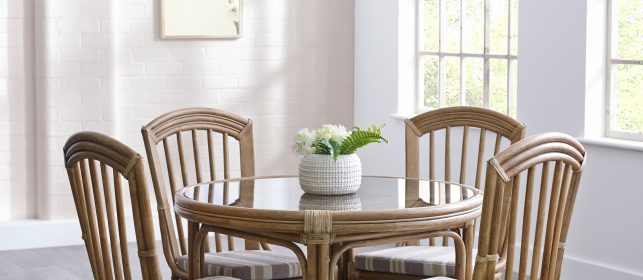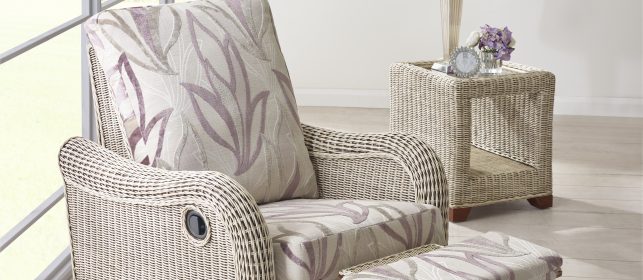Although they’re both drawn from the same vine, there are a multitude of differences between cane and rattan. In the current age, more and more people are invested in sustainable, eco-friendly home features. To that end, vine-sourced materials have soared in popularity and are still being refined to maximise comfort, accessibility and durability. Cane and rattan are two of the leading materials in the industry.

Due to the various mouldable styles and accessories, cane-based furniture can be applied to a range of aesthetics and interior designs. However, they are broadly recognised for their light, earthy tones, offering a natural design along with the potential to appear modern and contemporary. This often complements homeowners’ desires for their home features to reflect their preference for natural sustainability.
But what exactly is the difference between the two? Despite being widely confused with each other, there are variations between cane and rattan, including other vine materials, which often get caught up in the confusion. Read on to find out how to tell your natural-look furniture fabrications apart!
The Rattan Plant
Native to the South-East Asian region, rattan is a diverse vine plant known as a climbing palm, named for its tendency to grow upwards in a climbing pattern along trees and branches. It has pseudonyms such as ratan and Malacca cane, and despite regular attempts to cultivate it agriculturally, the vast majority is harvested from the wild. They typically grow in clusters and are relatively straightforward to harvest.

The presence of rattan harvesting often lends towards the protection of forest environments, as it provides an alternative to expensive, devastating timber logging. Some rattan species even produce edible fruit, and the shoot can be used as a vegetable. Unlike other common vine plants such as bamboo, rattan isn’t hollow and has durable vine fibres running through its stem. It gives it a more flexible shape, allowing it to bend in the wind and rain. This internal material is what we refer to as cane.
The Key Differences
Since rattan is made of the fully harvested vine from the plant after treatment and painting, it retains the same of its source as a construction material. Cane is derived from the rattan vine by splitting it open, stripping it down and exposing the central fibre within. Unlike rattan, cane doesn’t need to be treated to be ready for use as a manufacturing material and is generally more durable than rattan.
When bound tightly together, cane provides an unmatched level of strength, especially in relation to its remarkably low weight. By carefully measuring the perpendicular lengths to cane to be woven perpendicularly, the material can make a curved pattern which provides a unique element of roundness and curve to chairs, cabinet doors and other styles of furniture. For this reason, cane often proves to be the more popular, beneficial material for conservatory furniture.
Wicker Confusion
Another vine-derived definition which is thrown into the mix is wicker, which is also confused for cane and rattan frequently. Unlike other materials which are specifically drawn from certain species of plant, wicker can be made out of rattan, bamboo, reed and many more. The reason for this is it is a product defined by its method rather than its source.

Wicker takes very thin branches of various vines and wraps them around wooden or metal frames. This often requires less material than cane or rattan products, as much of the furniture’s strength and shape are provided by the frame. Whilst still somewhat eco-friendly, the sustainability of wicker features is dependent on the kind of frame used.
Cane Conservatory Furniture Prices

Interested in acquiring a gorgeous new set of cane conservatory furniture? Our range offers a variety of different styles and colours to define your interior space. Check out our Swindon showroom for a first-hand look.
Get in touch through our online contact form, or give us a call on 01793 509203. We look forward to hearing from you!
- Cane Garden Furniture - 20th December 2022
- Is Rattan Furniture Good Value For Money? - 25th November 2022
- What Are The Advantages of Cane Furniture? - 24th November 2022



